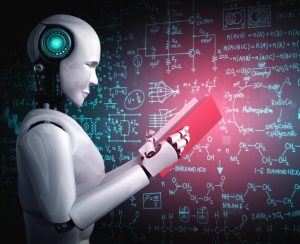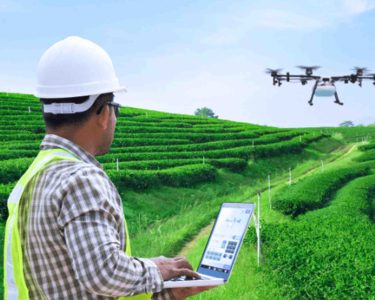OpenAI’s ‘Preparedness Framework’: A Solution to AI Risks?
Introduction
Hi, I’m Alex, a freelance writer and an avid follower of AI trends and developments. I have been fascinated by the possibilities and challenges of AI ever since I read Ray Kurzweil’s book, The Singularity Is Near, back in 2005. Since then, I have witnessed the rapid progress and innovation in the field of AI, as well as the growing debate and controversy around its ethical and social implications.
One of the most prominent voices in the AI community is OpenAI, a research organization that aims to ensure that artificial intelligence is aligned with human values and can be used for good. OpenAI was founded in 2015 by a group of tech luminaries, including Elon Musk, Peter Thiel, and Reid Hoffman, among others. The organization is known for its ambitious and groundbreaking projects, such as GPT-3, DALL-E, and Codex, which demonstrate the power and potential of AI to generate natural language, images, and code.
However, OpenAI is also aware of the risks and challenges that AI poses to humanity, especially as it becomes more capable and autonomous. In fact, one of the main reasons why OpenAI was created was to prevent the emergence of a superintelligent AI that could harm or outsmart humans. To this end, OpenAI has been advocating for the development of safe and trustworthy AI that can be controlled and understood by humans.
In a recent paper, titled Preparing for the Unknown: A Framework for AI Preparedness, OpenAI proposes a framework to help stakeholders prepare for the potential risks of AI systems, especially those that are novel, complex, or unpredictable. The paper argues that AI preparedness is a crucial and urgent task, as AI systems become more widespread and impactful in various domains and scenarios.
But what exactly is AI preparedness, and how does it work? And more importantly, is it enough to address the skeptics and critics of AI, who are concerned about the possible negative consequences of AI on society, human rights, and the environment? In this article, I will try to answer these questions and provide some insights and perspectives on OpenAI’s framework and its implications for the future of AI.

What is AI Preparedness?
According to OpenAI, AI preparedness is “the process of anticipating, preventing, detecting, and mitigating potential harms from AI systems, as well as maximizing potential benefits”. The paper defines four dimensions of AI preparedness, which are:
- Anticipation: The ability to foresee and understand the possible outcomes and impacts of AI systems, both positive and negative, before they are deployed or used.
- Prevention: The ability to design and implement AI systems that minimize or avoid potential harms, such as bias, error, misuse, or abuse, and that adhere to ethical and legal standards and norms.
- Detection: The ability to monitor and measure the performance and behavior of AI systems, and to identify and report any anomalies, errors, or harms that may occur during or after their use.
- Mitigation: The ability to respond and intervene in case of any harms or issues caused by AI systems, and to correct, compensate, or remedy the situation, as well as to prevent or reduce the likelihood of recurrence.
The paper also proposes a set of principles and practices that can guide and inform the AI preparedness process, such as:
- Stakeholder engagement: The involvement and consultation of relevant and diverse stakeholders, such as users, developers, regulators, experts, and affected communities, in the design, deployment, and evaluation of AI systems, and in the identification and management of potential risks and benefits.
- Transparency and accountability: The disclosure and explanation of the goals, methods, data, assumptions, limitations, and outcomes of AI systems, as well as the assignment and enforcement of responsibilities and liabilities for their development and use.
- Diversity and inclusion: The recognition and respect of the different needs, values, perspectives, and experiences of various groups and individuals, and the promotion of their participation and representation in the AI ecosystem, as well as the protection of their rights and interests.
- Adaptability and resilience: The ability and willingness to learn from feedback, evidence, and experience, and to update, improve, or change AI systems accordingly, as well as to cope with uncertainty, complexity, and change.

Why is AI Preparedness Important?
OpenAI argues that AI preparedness is important for several reasons, such as:
- AI systems are becoming more powerful and pervasive: AI systems are increasingly being used for various purposes and applications, such as health, education, entertainment, security, and finance, among others. These systems can have significant and lasting effects on individuals, groups, and society as a whole, both directly and indirectly, and both intended and unintended. Therefore, it is essential to ensure that AI systems are aligned with human values and goals, and that they do not cause or contribute to any harms or injustices.
- AI systems are becoming more complex and unpredictable: AI systems are often based on sophisticated and opaque algorithms, such as deep learning and reinforcement learning, that can learn and adapt from data and feedback, and that can generate novel and unexpected outputs and behaviors. These systems can be difficult or impossible to understand, explain, or control, even by their developers or users, and they can pose new and unknown challenges and risks, such as emergent properties, adversarial attacks, or alignment failures.
- AI systems are becoming more autonomous and interactive: AI systems are increasingly capable of operating and making decisions without human supervision or intervention, and of interacting and collaborating with other AI systems or humans, such as in multi-agent systems, human-AI teams, or social robots. These systems can have their own goals, preferences, and incentives, which may or may not be compatible or consistent with those of humans, and they can influence or manipulate human behavior, cognition, or emotions.
Given these trends and characteristics of AI systems, OpenAI claims that AI preparedness is a necessary and proactive approach to ensure that AI systems are beneficial and trustworthy, and that they do not pose any threats or dangers to humanity or the environment.

How Does OpenAI’s Framework Work?
OpenAI’s framework is intended to be a general and flexible guide that can be applied and adapted to different types of AI systems, domains, and contexts. The paper provides a high-level overview of the framework, as well as some examples and case studies of how it can be used in practice.
The framework consists of four main steps, which are:
- Define the scope and objectives of the AI system: This step involves specifying the purpose, function, and scope of the AI system, as well as the expected outcomes and impacts, both positive and negative, on the relevant stakeholders and the environment. This step also involves identifying and prioritizing the potential risks and benefits of the AI system, and defining the criteria and metrics for evaluating its performance and behavior.
- Assess the current state of AI preparedness: This step involves assessing the current level of AI preparedness for the AI system, based on the four dimensions of anticipation, prevention, detection, and mitigation. This step also involves identifying and analyzing the gaps and weaknesses in the AI preparedness process, and the opportunities and challenges for improvement.
- Plan and implement AI preparedness actions: This step involves planning and implementing specific actions and measures to improve the AI preparedness process, based on the principles and practices of stakeholder engagement, transparency and accountability, diversity and inclusion, and adaptability and resilience. This step also involves allocating and managing the resources and responsibilities for the AI preparedness process, and establishing and following the standards and norms for the AI system.
- Monitor and evaluate the AI preparedness process: This step involves monitoring and evaluating the AI preparedness process, and the performance and behavior of the AI system, based on the criteria and metrics defined in the first step. This step also involves collecting and analyzing the feedback, evidence, and experience from the AI preparedness process, and the outcomes and impacts of the AI system, and using them to update, improve, or change the AI system or the AI preparedness process accordingly.
The paper suggests that the AI preparedness process should be iterative and continuous, and that it should involve the collaboration and communication of various stakeholders, such as developers, users, regulators, experts, and affected communities.
What are the Benefits and Limitations of OpenAI’s Framework?
OpenAI’s framework has several benefits and limitations, which are:
- Benefits:
- The framework provides a comprehensive and systematic approach to address the potential risks and benefits of AI systems, and to ensure their safety and trustworthiness.
- The framework is general and flexible, and can be applied and adapted to different types of AI systems, domains, and contexts, as well as to different stages and levels of AI development and use.
- The framework is based on sound and relevant principles and practices, and draws from existing and emerging research and best practices in the field of AI ethics and governance.
- The framework is proactive and anticipatory, and aims to prevent or mitigate any harms or issues before they occur or escalate, rather than reacting or responding after the fact.
- The framework is inclusive and participatory, and encourages the involvement and consultation of diverse and relevant stakeholders
- Limitations:
- The framework is still a high-level and abstract guide, and it does not provide specific or detailed instructions or examples on how to implement or operationalize the AI preparedness process, or how to deal with specific or complex scenarios or challenges.
- The framework is based on certain assumptions and values, such as the desirability and feasibility of human-AI alignment, the availability and reliability of data and feedback, and the existence and enforcement of ethical and legal standards and norms, which may not be universally shared or agreed upon by different stakeholders or contexts.
- The framework may not be sufficient or effective to address the potential risks or harms of AI systems that are beyond human control or comprehension, such as superintelligent AI, or AI systems that are malicious or adversarial, or that have conflicting or incompatible goals or incentives with humans.

What are the Implications and Recommendations for the Future of AI?
OpenAI’s framework is a valuable and timely contribution to the field of AI ethics and governance, and it offers a useful and practical tool for stakeholders to prepare for the potential risks and benefits of AI systems. However, the framework is not a panacea or a guarantee for the safety and trustworthiness of AI systems, and it should not be seen as a substitute or a replacement for other approaches or measures, such as regulation, education, or collaboration.
Therefore, some of the implications and recommendations for the future of AI are:
- AI preparedness should be a collaborative and inclusive effort: AI preparedness should not be the sole responsibility or domain of any single actor or group, such as developers, users, or regulators, but rather a collective and cooperative effort that involves and respects the views and interests of various and diverse stakeholders, such as experts, communities, and civil society, as well as the environment and future generations.
- AI preparedness should be an ongoing and adaptive process: AI preparedness should not be a one-time or static activity, but rather a continuous and dynamic process that evolves and adapts to the changing and emerging characteristics and impacts of AI systems, as well as to the feedback, evidence, and experience from their development and use.
- AI preparedness should be complemented and supported by other initiatives: AI preparedness should be complemented and supported by other initiatives and measures that aim to ensure the ethical and responsible development and use of AI systems, such as:
- Regulation and oversight: The establishment and enforcement of clear and consistent rules and standards for the development and use of AI systems, as well as the creation and empowerment of independent and accountable bodies and mechanisms to monitor and audit the compliance and performance of AI systems and stakeholders.
- Education and awareness: The provision and promotion of education and awareness programs and campaigns that inform and empower the public and the stakeholders about the opportunities and challenges of AI systems, as well as the rights and responsibilities of their development and use.
- Research and innovation: The advancement and dissemination of research and innovation that explore and address the technical and social aspects of AI systems, as well as the development and adoption of best practices and tools that facilitate and enhance the AI preparedness process.
Conclusion
AI systems are becoming more powerful and pervasive, and they can have significant and lasting effects on individuals, groups, and society as a whole. Therefore, it is essential to ensure that AI systems are safe and trustworthy, and that they do not pose any threats or dangers to humanity or the environment.
OpenAI, a leading AI research organization, has proposed a framework to help stakeholders prepare for the potential risks and benefits of AI systems, especially those that are novel, complex, or unpredictable. The framework defines four dimensions of AI preparedness, which are anticipation, prevention, detection, and mitigation, and it proposes a set of principles and practices that can guide and inform the AI preparedness process, such as stakeholder engagement, transparency and accountability, diversity and inclusion, and adaptability and resilience.
The framework is a valuable and timely contribution to the field of AI ethics and governance, and it offers a useful and practical tool for stakeholders to prepare for the potential risks and benefits of AI systems. However, the framework is not a panacea or a guarantee for the safety and trustworthiness of AI systems, and it should not be seen as a substitute or a replacement for other approaches or measures, such as regulation, education, or collaboration.
Therefore, AI preparedness should be a collaborative and inclusive effort, an ongoing and adaptive process, and a complement and support for other initiatives and measures that aim to ensure the ethical and responsible development and use of AI systems.
Visual Table for Key Points
| Dimension | Definition | Example |
|---|---|---|
| Anticipation | The ability to foresee and understand the possible outcomes and impacts of AI systems, both positive and negative, before they are deployed or used. | Conducting a risk-benefit analysis or a scenario planning exercise for an AI system. |
| Prevention | The ability to design and implement AI systems that minimize or avoid potential harms, such as bias, error, misuse, or abuse, and that adhere to ethical and legal standards and norms. | Applying a human-centered design or a value-sensitive design approach for an AI system. |
| Detection | The ability to monitor and measure the performance and behavior of AI systems, and to identify and report any anomalies, errors, or harms that may occur during or after their use. | Implementing a testing or a auditing mechanism or a feedback loop for an AI system. |
| Mitigation | The ability to respond and intervene in case of any harms or issues caused by AI systems, and to correct, compensate, or remedy the situation, as well as to prevent or reduce the likelihood of recurrence. | Establishing a redress or a remediation procedure or a contingency plan for an AI system. |
Comparative Table for AI Preparedness Framework and Other Approaches
| Approach | Strengths | Weaknesses |
|---|---|---|
| AI Preparedness Framework | Comprehensive, systematic, proactive, anticipatory, flexible, general, inclusive, participatory. | Abstract, high-level, vague, assumptive, dependent, incomplete. |
| Regulation and Oversight | Clear, consistent, enforceable, accountable, authoritative, protective, corrective. | Slow, rigid, reactive, restrictive, adversarial, controversial, variable. |
| Education and Awareness | Informative, empowering, engaging, enlightening, motivating, inspiring, transforming. | Limited, biased, superficial, challenging, costly, time-consuming, uncertain. |
| Research and Innovation | Advancing, exploring, addressing, developing, adopting, facilitating, enhancing. | Technical, complex, unpredictable, uncertain, risky, disruptive, harmful. |




